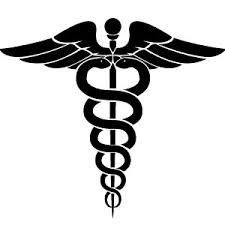1 min read
Fix Your Shop Floor Processes Now
Don’t fall into the “If it ain’t broke…” trap. Sometimes your biggest mistake is in not doing anything. By David Oeters, Corporate Communications...

Change is happening across the Medical Device Manufacturing industry.
 Additional standards are being implemented at an accelerated pace across the industry. There is a push for electronic medical records to increase collaboration and improve patient care. Hospital facilities and medical treatments are under increased scrutiny. In addition, globalization of medical device production, the rapid development of new treatments, and a focused push to lower the cost of treatment are just a few of the reasons the industry must adapt and adjust to new regulations, standards and processes.
Additional standards are being implemented at an accelerated pace across the industry. There is a push for electronic medical records to increase collaboration and improve patient care. Hospital facilities and medical treatments are under increased scrutiny. In addition, globalization of medical device production, the rapid development of new treatments, and a focused push to lower the cost of treatment are just a few of the reasons the industry must adapt and adjust to new regulations, standards and processes.
In fact, in a recent survey, 43.3% of medical device manufacturers reported changing regulatory environment as the biggest challenge they face in the future. Companies are looking at cost efficient ways to, “… navigate the increased regulatory burden,” according to another industry report. New standards require more detailed and careful labeling, dating, use-by dates, sourcing, detailed manufacturing records, and accountability, resulting in tightened production constraints and record requirements. To comply, manufacturers must adopt new processes and utilize new tools.
At the same time, changes in the medical device industry are pushing manufacturers to lower cost and standardize production for a global market, while absorbing a new tax on medical devices. As the population ages and the cost of healthcare increases, everyone must look at ways to make healthcare cost effective and more available. To meet these goals, manufacturers must adjust their operations to improve production, lower cost and increase quality, while accommodating new regulations.
 Market Pressure Driving Solutions
Market Pressure Driving SolutionsThe current paper-driven manufacturing shop floors in the medical device industry simply cannot efficiently comply with the new regulations while increasing production, improving quality, and lowering cost. Research has shown paper-driven processes increase costs, introduce errors, and create compliance issues. In fact, 75.9% of companies reported significant business risks due to inefficient document-driven processes, including paper-based processes.
More than increasing risk, paper-driven processes significantly increase costs for businesses. As reported by Oracle, a study by the Association for Information and Image Management (AIIM) found businesses, “spend $20 in labor to file a document, $120 in labor to find a misfiled document, and $220 in labor to reproduce a lost document,” (www.aiim.org).
Paperless Manufacturing or MES (Manufacturing Execution System) is a software solution used to manage, control, and document manufacturing operations. A successful MES project improves productivity and profit by managing all the information needed during the manufacturing process, collecting and documenting all production data and ensuring real-time access to the production information. No other manufacturing solution can have the profound and beneficial impact of paperless manufacturing.
MES systems have been used (successfully) in aerospace and other regulated manufacturing industries for many years, helping manage and collect the information necessary to comply with standards and regulations, while helping make production more efficient, less costly and faster to market with higher quality product. Paperless solutions are delivering the same results and benefits to the Medical Device Manufacturing industry. For example, these solutions offer electronic sign off, automatic data collection, process control, parts traceability, and use electronic record management, among other tools, to alleviate the regulatory constraints challenging the medical device manufacturing industry.
 Adding Value to the Medical Device Manufacturing Industry
Adding Value to the Medical Device Manufacturing Industry The 21 CFR Part 11 regulations from the FDA specify how to create and manage quality production records in an electronic system, providing clearly documented accountability for quality checks and production methods that meet all specifications for a product. Similar regulations exist in the aerospace industry where MES and paperless manufacturing systems ensure regulation compliance. The ability to complete work more efficiently and accurately, and provide continual process improvement through monitoring and analysis of collected data adds to the value of the software solution. In aerospace companies it has been proven that a paperless solution provides regulation compliance, process improvement and quality improvement at significantly lower cost than using a paper-driven process.
The current Universal Device Identification (UDI) regulation provides standards for the barcode labeling and dating of medical devices and products in general. Because barcoding standards are different worldwide, any system that provides labels must be flexible enough to meet requirements in each country the product is shipped. In a paper-driven shop, meeting these requirements can be costly, resulting in a number of potentially disastrous errors since there are small differences in standards that are easy to miss through quick visual inspection. A paperless system will help ensure compliance with these regulations by managing data in production and eliminating these errors.
Global competition and a push to lower medical and healthcare costs are also pushing change in the industry. Medical device manufacturers are increasingly looking toward platform manufacturing to reduce cost and speed time to market. Platform-based manufacturing uses the same base frame or core parts in a variety of products to meet different requirements or price points in different countries. Precise control of parts used in production can be accomplished more accurately and consistently using a paperless solution that validates all parts and verifies processes throughout the production process.
While each manufacturing operation is different, paperless manufacturing has been delivering increasing value to aerospace production for years by ensuring all production records are accurate, complete and available for analysis in real time. Quality issues can be identified and fixed immediately. Specification deviations are recorded and repaired or replaced immediately. Shop floor management uses the system to monitor and control work processes, and enforces and promotes process improvement. On the other hand a paper-driven shop floor is restrictive, error-prone and an increasingly costly way to deliver products. Paper records or PDFs hinder the ability of a company to analyze shop floor work flow data for continuous improvement, making it almost impossible to fully implement modern process improvement programs.
When looking at shop floor solutions to ensure compliance with regulations, take the opportunity to find solutions that do more than simply meet immediate needs. See it as an opportunity to significantly improve your current production and position your business for future growth. Ask yourself, can you afford to continue manufacturing in a paper-driven environment, or is it time to examine paperless solutions?

1 min read
Don’t fall into the “If it ain’t broke…” trap. Sometimes your biggest mistake is in not doing anything. By David Oeters, Corporate Communications...

We regularly review the manufacturing software market. Last year, we were twice caught off-guard by references to the “death of Manufacturing...

1 min read
A few simple tips will help ensure your shop floor benefits from the next technology upgrade. By David Oeters, Corporate Communications with CIMx...